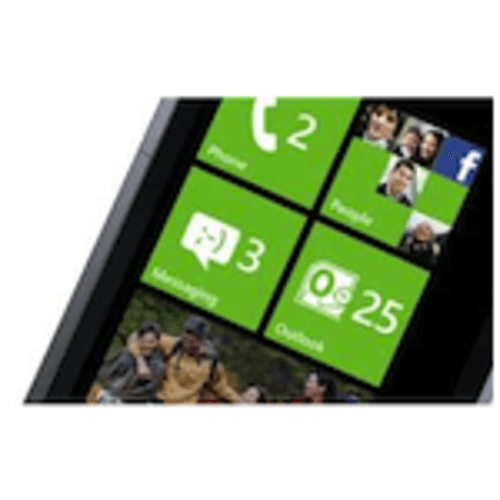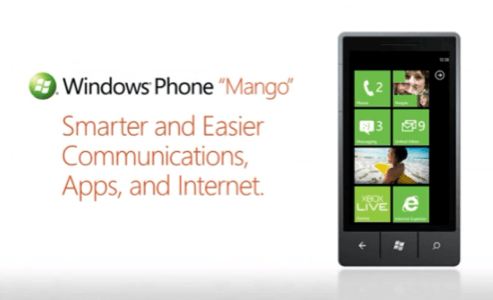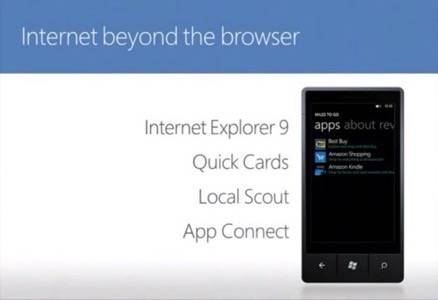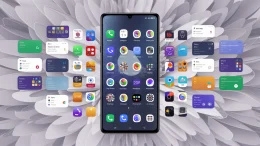Thereviewsarein. Windows Phone “Mango” is a hit with gadget bloggers. “Mango,” the code-name for Microsoft’s upcoming release of its mobile operating system Windows Phone, is a big leap forward with a total of around 500 new features. Many of those are addressing real pain points for current users. With Mango, Windows Phone finally gets long sought after features like multi-tasking, conversation views, voice integration, plus several unique tweaks involving Bing, better live tiles, Twitter integration, Facebook Chat and more.

But some of the updates in “Mango” are even more forward-thinking. Windows Phone is pushing users to move beyond apps for some of the core use cases involving smartphones. Meanwhile, it’s introducing a new paradigm for recommending applications to the phone’s end users.
What’s New in Mango?
“Mango” is the update that makes Windows Phone a more complete product. Unlike updates to Apple’s iOS or Google’s Android, which are often about adding features and tweaks these days, a good bit of “Mango” is about adding core functionality consumers have come to expect from smartphones. Apps that run in the background. The ability for developers to build apps with access to the camera and accelerometer, or the phone’s contacts and calendar. Voice integration. Angry Birds. (OK, that last one isn’t a Mango feature, but it’s a notable addition, nonetheless.)

While those were the necessary leaps, Microsoft is also delivering a number of Windows Phone-specific features, like a unified messaging center where all communication with a single contact is combined, including texts, IMs, emails, Facebook updates and phone calls. It has improved the Web browser by shipping a version of IE 9 that shares the same code base as the desktop version, along with support for HTML5 and hardware acceleration. It has more deeply integrated Bing into the phone, and added computer vision capabilities, Shazam-like music search and voice search. It has updated and improved the “hubs,” Windows Phone’s centralized starting points for interacting with “People,” “Games,” “Music” and more.
You Don’t Need “An App for That” – You Just Need a Phone
But maybe the most interesting part of Windows Phone is its push to decrease our dependency on apps. Although the platform has a respectable number of apps: over 19,000, according to app store tracker Distimo, it’s planning for a future where the phone itself can replace the functionality of a number apps.
With Bing, consumers can get restaurant recommendations, find nearby businesses, new places to shop, activities or other local information. Bing can identify the music you hear and provide the lyrics. It can “see” objects in the real-world using the phone’s camera and perform searches based on what it identifies is in the frame. And with unified messaging and Windows Phone’s “People” hub concept, users no longer have to turn to an app to find the latest updates from their friends. They can even “like” and “comment” and tweet outside of the apps themselves.
When tasks like these become commonplace phone features, it pushes developers to build apps that do more. Why build another social networking client, when the phone handles social networking? Why build a “local reviews” app, when Bing is users’ first stop?

Pushing the Right Apps to the Right People
But it’s not all a case of Microsoft trying to eat developers’ lunch, by turning the phone’s OS into one giant app. A new feature called “Quick Cards” returns related apps, in addition to the summary provided, when users search for a product, movie, event, place or other information. In other words, it marries traditional Web search with app suggestions. For users who perform certain types of search regularly, they’ll be presented again and again with similar apps that might offer an improved experience or more features. For example, someone searching for celebrities or movie trailers might be shown a link to the IMDb app.
Instead of searching for apps, a task which many first-time smartphone users are overwhelmed by due to the sheer quantities available, users just search and the apps find them. This might be the most overlooked of all of Mango’s updates, but it’s the one that could have the biggest impact on the mobile application economy going forward.
That is, if Microsoft can ever sell enough of these phones for it to matter.

















